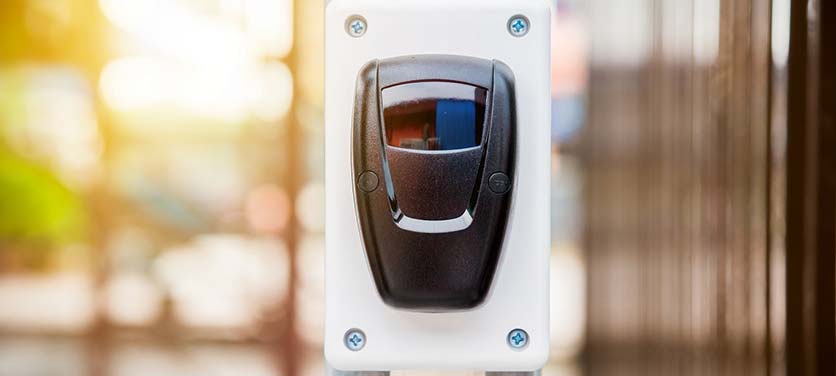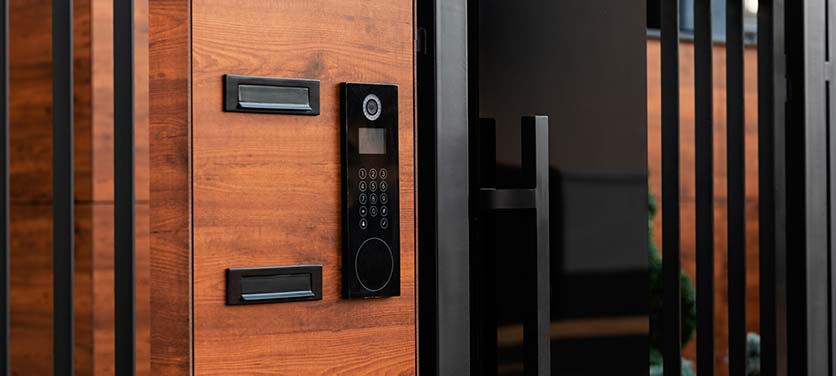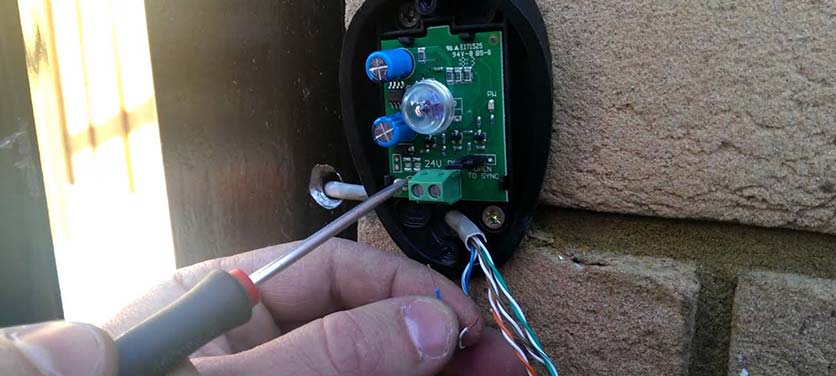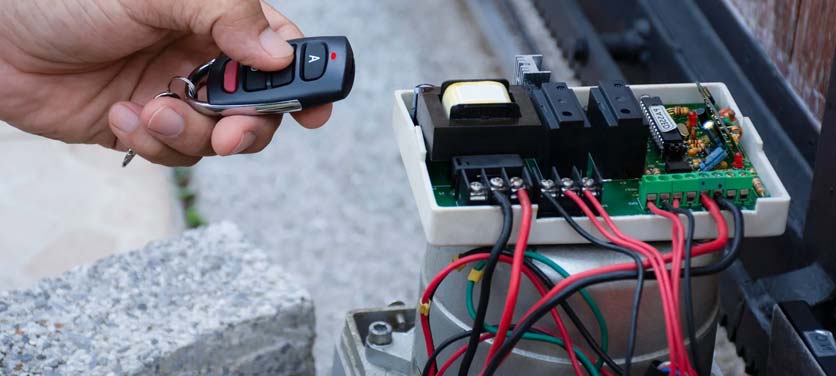It is very important to maintain the gate sensors and do the right thing. Gate sensors are important for safety and convenience. If the gate sensors do not work properly, it can lead to security lapses. ‘LiftWise’ helps solve your gate sensors problems. We provide affordable, simple, and efficient solutions. Our team is experienced and professional who will improve your gate sensors.
Common Gate Sensors Issues
Gate sensors can have several common problems. Due to these problems, the gate is not able to work properly. It is necessary to detect the problem in time. Identifying problems can improve the performance of the sensors.

- Faulty Wiring Connections: Sometimes the wired connections of the gate sensors can be poor. This problem can cause disturbances in the power supply. If the wired connection is not correct, the sensors will not work correctly. This problem can be detected quickly. Timely investigation and correction is crucial.
- Misaligned Photo Eyes: Not aligning photo eyes properly is a common problem. If the photo eyes are not in the right direction, the gate will not open or close properly. This problem is easy to solve. All you need to do is align the photo eyes correctly. Check the condition of the photo eyes regularly.
- Signal Interference Problems: Due to the problem of signal interference, the gate sensors do not work. This problem occurs due to signals from different devices. This problem can cause the gate not to open at the right time. Check the signal to overcome this problem. Identify the source of interference and remove it.
- Dead Backup Batteries: Failure of backup batteries is another common problem. If the batteries don’t have life, gate sensors won’t work. Batteries should be checked from time to time. Replacing batteries is easy and important. Do regular battery replacement.
Tips for Troubleshooting Gate Sensor Problems
It is important to follow some tips to solve the problems of gate sensors. These tips will help the gate work correctly. Check these from time to time. These tips are very helpful for identifying and solving problems.
- Basic Visual Inspection Steps: To check the gate sensors, first do a visual inspection. This is the first and easiest step. Check all wires and connections. Check carefully to see if any wires are broken. Inspect all parts of the gate.
- Testing Power Supply Issues: Testing for power supply problems is also important. The correct power supply is essential for gate sensors. Use a multimeter to check the power. There’s an easy way to find out. Also check all connections to the power supply.
- Checking Sensor Alignment: It is also necessary to check the alignment of the sensors. Gate sensors will work better with the right alignment. You need to set the sensors in the right direction. Make sure the sensors are straight and clean. Check the alignment of the sensors regularly.
- Signal Interference Detection: It is also important to detect signal interference. Use different tools to check the signal. If there is interference then the sensors will not work properly. Take the necessary steps to remove interference. Compare the signals of different devices.
How to Calibrate Your Gate Sensors for Optimal Performance
It is very important to calibrate the gate sensors correctly. This will improve the performance of the sensors. With the right calibration, the gate will work better. It should be checked regularly. Follow calibration procedures.

- Distance Measurement Setup: Measuring distance is important for the correct calibration of the sensors. Use a measuring tool to accurately measure the distance. This will improve the performance of the sensors. Gate sensors from the right distance will work right. Follow the measurement procedures.
- Sensitivity Level Adjustment: It is also important to adjust the sensitivity level of the sensors. Follow the manual to set the correct level. This will improve the capacity of the sensors. With the right sensitivity, gate sensors will work better. Check the sensitivity level regularly.
- Response Time Configuration: It is also important to configure the response time of the gate sensors. Setting the right response time will open the gate quickly. Follow the manual to set it up. This will improve the performance of the sensors. Check the response time regularly.
- Range Testing Procedures: Testing the range of sensors is also important. Perform various tests to set the correct range. Make sure the sensors are at the right distance. Gate sensors will work better with the right range. Follow range testing procedures.
The Impact of Weather on Gate Sensors and How to Protect Them
Weather has a great impact on gate sensors. Due to the weather, the performance of the sensors can be affected. It is necessary to conserve in the right way. This will increase the longevity of the sensors. It is important to protect the sensors from seasonal effects.
-
Rain And Moisture Effects
Rain and moisture have a profound effect on gate sensors. Sensors can be damaged due to moisture. Cover the sensors to avoid this. Also check the sensors from time to time. Identify and repair damage caused by moisture.
-
Temperature Fluctuation Issues
Temperature changes also have an impact on gate sensors. High temperatures can damage the sensors. Maintain the right level of temperature. It has to be controlled. Recognize and improve the effect of temperature.
-
Sun Glare Interference
Sensors do not work due to sunlight. Direct sun rays can fall on the sensors. To avoid this, keep the sensors in the right direction. This is an important step. Take measures to protect yourself from sunlight.
-
Seasonal Protection Methods
Seasonal preservation methods are also important. Protect the sensors in cold, heat and rain. Cover the sensors correctly. This will increase the longevity of the sensors. Take measures to protect sensors from seasonal effects.
Upgrading Your Gate Sensors for Enhanced Security
Upgrading gate sensors is also a good option. This will increase the capacity and safety of the sensors. Make use of new technology and features. This will improve the performance of the gate sensors. Follow the upgrade procedures.

- Modern Sensor Technologies: It is beneficial to use modern sensor technology. This increases the capacity of the sensors. Choose new and upgraded sensors. This will improve security. Use the characteristics of modern sensors.
- Advanced Detection Features: Use advanced detection features. This increases the capacity of the sensors. The right features will improve the performance of the sensors. It’s easy to set up. Check for advanced features regularly.
- Integration Capabilities: Also check the integration capabilities of the sensors. Integrate the new sensors with the old system. This will improve the performance of the sensors. This is an important step. Follow the integration procedures.
- Installation Considerations: Also pay attention to the installation of sensors. It is necessary to install correctly. Follow the manual and do the correct setup. This will improve the performance of the sensors. Follow the installation procedures.
Preventative Maintenance for Gate Sensors
Regular maintenance of gate sensors is very important. This will increase the longevity of the sensors. Check and clean the sensors regularly.

- Regular Cleaning Protocol: It is important to carry out regular cleaning of the sensors. This can remove dust and dirt. Sensors will work better with regular cleaning. This will improve the performance of the sensors. Use a gentle and dry cloth during cleaning.
- Component Life Expectancy: Also check the life expectancy of the sensors’ components. Change components from time to time. This will increase the longevity of the sensors. This is an important step. Check the quality of components regularly.
- Scheduled Testing Routines: The sensors’ scheduled testing routine is also important. Regularly test the sensors. This will help in detecting problems in time. This will improve the performance of the sensors. Check all connections and wires during testing.
- Documentation Requirements: The documentation requirements of the sensors are also important. Keep all inspection and maintenance information in writing. This will keep the records safe. This is an important step. Documentation will make it easier to solve problems in the future.
Frequently Asked Questions
It could be due to dirt on the sensor, misalignment, or electrical issues. Regular cleaning can help prevent this problem.
Use a soft cloth to gently wipe the sensor lens. Ensure it’s free of any dirt or debris. Regular maintenance can ensure optimal performance.
Adjust the sensor alignment as per the manufacturer’s instructions or call a professional. Correct alignment is crucial for accurate detection.
Inspect the sensors every six months to ensure they are clean and properly aligned. Regular inspections can catch issues early.


